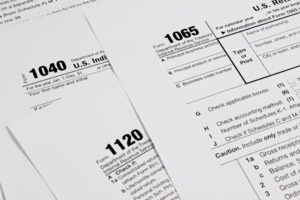
If you are self-employed or have self-employment income, you need to know what a Schedule SE form is and how to file one.
Tax season isn’t quite over yet, but businesses and individuals both need to take the time to make sure taxes get filed as soon as possible. When it comes to taxes, the sooner you file them, the better it will be. For individuals that are self-employed or make self-employment income, filing taxes can be a little bit more of a struggle. If you do make self-employment income, you will need to file a Schedule SE (Form 1040).
Who needs to file a Schedule SE?
The Schedule SE needs to be filed by anyone who makes at least $400 through self-employment methods in a tax year. It also needs to be filed by anyone that makes at least $108.28 in church employee income.
If you made less than the minimum amount or suffered a net loss during the tax year, it may still be beneficial to file a Schedule SE. Part II of the form has optional methods that could benefit you by offering credit toward your social security coverage, determining your health insurance deduction, and potentially qualifying you for the earned income credit (EIC), additional child tax credit (ACTC), or child and dependent care credit.
How do you file a Schedule SE (Form 1040)?
A Schedule SE is filed together with your individual income tax form (Form 1040). You’ll need to fill out both forms, and some of the information from your Schedule SE form will need to be copied over to your individual tax return. These forms are due at the same time, so don’t forget to fill both of them out.
What do you do in special situations?
If you have a special situation that has you wondering whether you need to file the Schedule SE or how you should file it, there are some variations from the standard method that can be used.
- If you earn self-employment income from more than one source, you can simply combine the net earnings when you file your Schedule SE.
- When filing jointly with a spouse that also earns self-employment income, there are two ways to do it. If one spouse is able to fill out the short schedule and the other fills out the long schedule, then you can file with a single form. If that isn’t an option, you will both need to file separate Schedule SE forms.
Trust the Professionals at the Harding Group
Unlike other accounting firms, The Harding Group, located in Annapolis, MD, will never charge you for consultations and strive for open communication with our clients.
Are you interested in business advising, tax preparation, bookkeeping and accounting, payroll services, training + support for QuickBooks, or retirement planning? We have the necessary expertise and years of proven results to help.
We gladly serve clients in Annapolis, Anne Arundel County, Baltimore, Severna Park, and Columbia. If you are ready to take the stress out of tax time, contact us online or give us a call at (410) 573-9991 for a free consultation. Follow us on Facebook, Twitter, YouTube, and LinkedIn for more tax tips.


 Back
Back